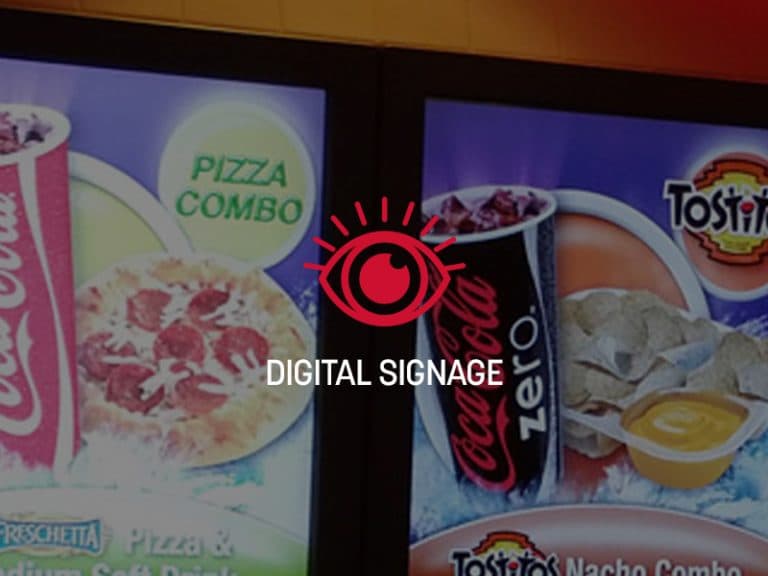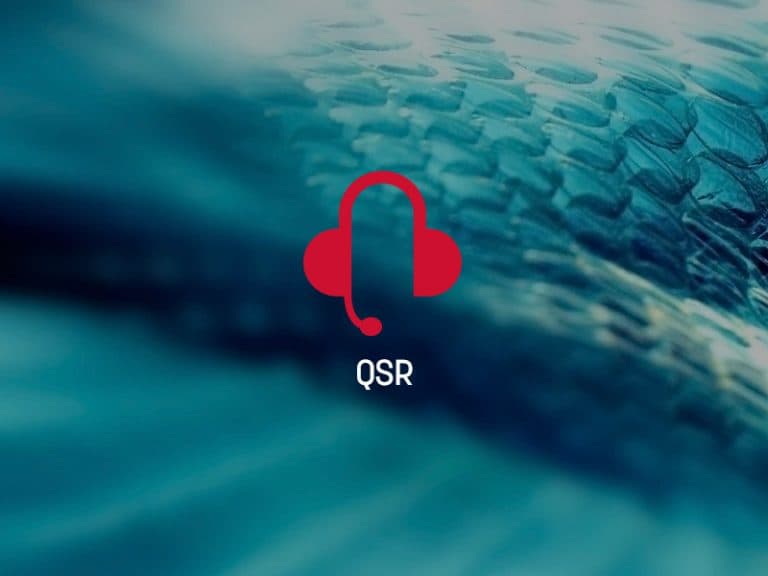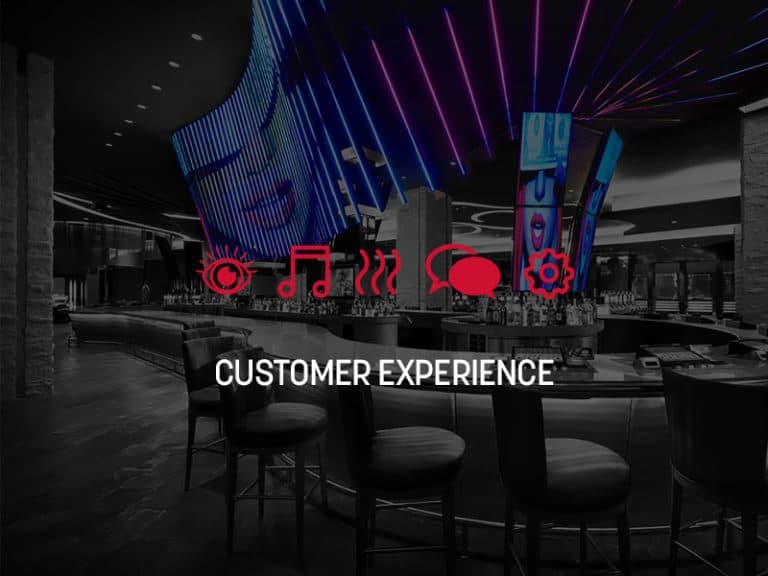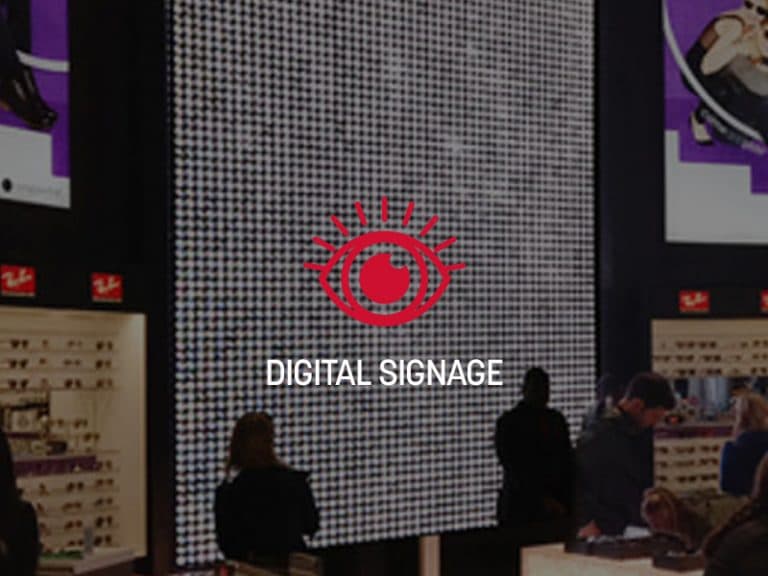MOOD:RETAIL
Stimulating Sales – Sensory Marketing in Retail
In the world of retail, today’s consumers are constantly bombarded with marketing messages – though only a fraction of them are actually perceived by their audience. More and more consumers are tuning out when it comes to traditional methods of engagement – in fact, this shift in perception has prompted extensive research into the link between conscious cognition and purchasing behavior.
One group of neuroscientists used fMRI (functional magnetic resonance imaging) to determine which portion of our brains is actually engaged when exposed to persuasive messages. They found that 85-95% of consumer decisions occur on the subconscious level – implying that conventional marketing tactics intended to influence customers on a rational level are incredibly ineffective.
SO, WHAT DOES INSPIRE CONSUMER CONNECTION WITH YOUR BRAND? INDULGING THE SENSES.
The rise of popularity in point-of-sale and retail sensory marketing supports this. By engaging ambient elements such as scent, sound, touch and taste, retailers stimulate their customers’ senses, in hopes of triggering favorable subconscious responses. These sensory experiences inspire the emotional connections which drive positive cognitive and behavioral response – which, in turn, influences customer purchasing behavior.
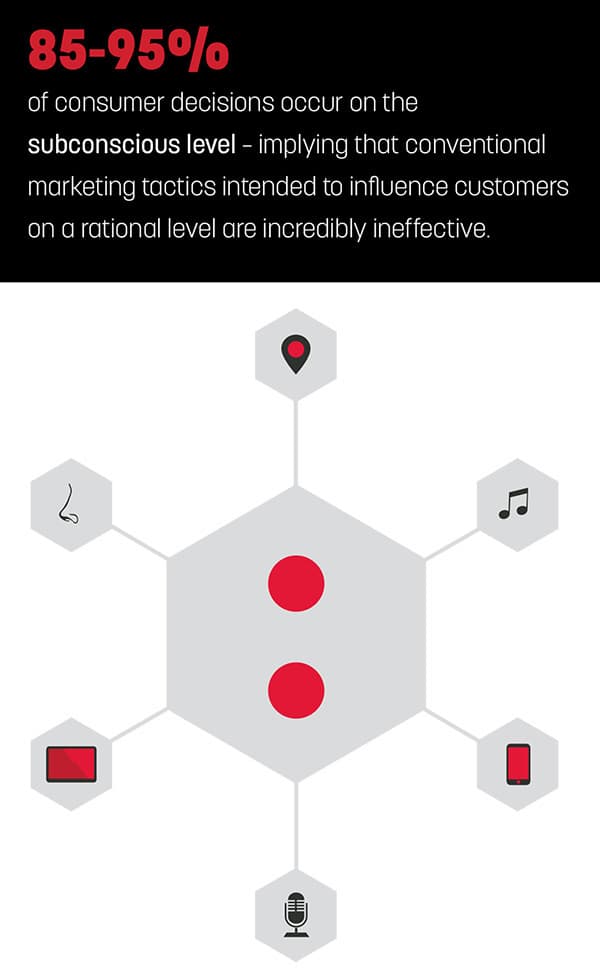
Imagine stepping into the shop of a high-class chocolatier, where you are greeted by the rich scents of coffee and chocolate. A soft, romantic soundtrack plays in the background – as an employee offers a selection of samples designed to stimulate the palate. This tasteful and subtle application of sensory marketing techniques not only inspires customer interaction, it also reinforces a strong and positive brand image.
By triggering and engaging all the senses on numerous levels – scent, sound, visuals, touch and taste – you’ll offer consumers a richly layered and memorable sensory experience. The influence of other environmental factors (such as spatial layout and balance, temperature and lighting) should also be carefully considered, as these elements also trigger the strong emotional responses that make sensory marketing so impactful.

It should also be noted that these sensory experiences aren’t just for brick-and-mortar retailers, or point-of-sale – your branded sensory marketing strategy should also extend to the online environment. Don’t underestimate the importance of recreating this experience for your remote customers – visitors to your website will also be influenced by the presence of multimedia content.
By carefully incorporating these elements into your sensory marketing strategy, you’ll craft a customer experience which inspires brand loyalty, increases customer spend and stands out in the consumer’s mind – encouraging return visits and boosting your word-of-mouth exposure.
If you’re ready to explore the possibilities, contact Mood Media today. We’re experts at experiential and sensory marketing for retail, and we’re happy to help you create a rich and stimulating experience your customers are sure to remember.
Download this Article
[DLlinkBefore]https://moodmedia.ee/wp-content/uploads/2016/06/stimulate-retail-scent.pdf[DLlinkAfter]
Resource Articles



